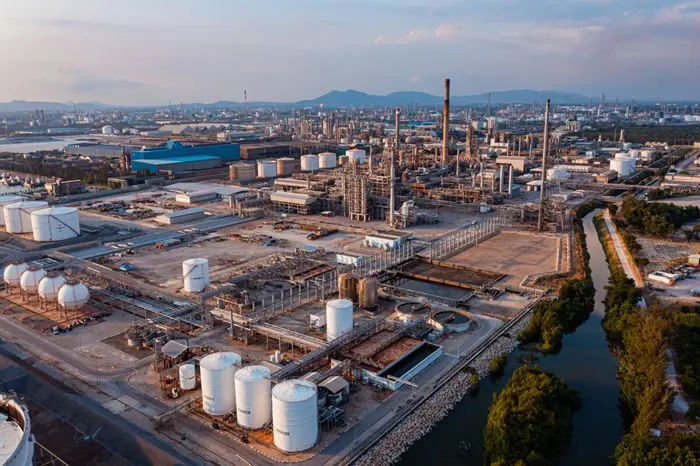Crude oil is a fundamental energy resource that powers industries, transportation, and households worldwide. Its quality varies significantly depending on its geographical origin and geological formation. The best crude oil is often characterized by its lightness, low sulfur content, and high yield of valuable products like gasoline and diesel. This article will explore the characteristics of high-quality crude oil and examine the regions known for producing some of the best crude oil in the world.
Characteristics of High-Quality Crude Oil
API Gravity
API gravity is a measure of how heavy or light crude oil is compared to water. It is expressed in degrees; higher values indicate lighter oil. Crude oil with an API gravity of 40 degrees or higher is considered light and typically yields a higher percentage of gasoline and diesel during refining. Light crude oils are more desirable because they require less processing and produce more valuable products.
Sulfur Content
The sulfur content in crude oil is a crucial factor in determining its quality. Low-sulfur crude oil, also known as sweet crude, is preferred because it produces fewer sulfur emissions during refining, resulting in lower environmental impact and compliance with stringent regulations. High-sulfur crude oil, known as sour crude, requires additional processing to remove sulfur, increasing refining costs and complexity.
Refining Yield
The refining yield refers to the percentage of valuable products, such as gasoline, diesel, jet fuel, and lubricants, that can be obtained from crude oil. High-quality crude oils typically have a high refining yield, making them more economically attractive to refineries.
See Also: How Do Natural Gas And Crude Oil Compare As Energy Resources?
Regions Producing the Best Crude Oil
1. Middle East
Saudi Arabia
Saudi Arabia is the world’s largest oil exporter and home to some of the highest quality crude oil. The country’s most famous crude oil, Arabian Light, has an API gravity of around 33 and low sulfur content. The Ghawar field, the world’s largest onshore oil field, and the Safaniya field, the largest offshore field, produce significant quantities of high-quality crude oil.
United Arab Emirates
The United Arab Emirates (UAE) is another major producer of high-quality crude oil. The UAE’s flagship crude, Murban, is known for its lightness and low sulfur content. With an API gravity of around 40 and sulfur content of less than 0.8%, Murban crude is highly sought after by refiners.
2. North America
United States
The United States, particularly Texas and North Dakota, produces some of the best crude oil in the world. West Texas Intermediate (WTI) crude, with an API gravity of 39.6 and low sulfur content, is a benchmark for light, sweet crude oil. The Bakken formation in North Dakota also produces high-quality light crude oil.
Canada
Canada is known for its vast oil sands reserves, but it also produces high-quality light crude oil. The Hibernia field off the coast of Newfoundland and Labrador produces light, sweet crude with an API gravity of around 34 and low sulfur content.
3. South America
Brazil
Brazil is a major producer of high-quality crude oil, particularly from its offshore pre-salt fields. The Lula and Búzios fields in the Santos Basin produce light, sweet crude with an API gravity ranging from 28 to 30 and low sulfur content.
Colombia
Colombia’s Castilla and Vasconia crudes are known for their high quality. While Castilla crude is heavier with an API gravity of around 18, Vasconia crude is lighter with an API gravity of around 24. Both types have relatively low sulfur content, making them attractive to refiners.
4. Africa
Nigeria
Nigeria is one of Africa’s largest oil producers and is known for its high-quality light, sweet crude. Bonny Light and Brass River crude oils have API gravities of around 35 to 36 and low sulfur content. These crudes are highly valued for their high yield of gasoline and diesel.
Angola
Angola’s Girassol and Cabinda crudes are also known for their high quality. Girassol crude has an API gravity of around 32 and low sulfur content, making it desirable for refining. Cabinda crude, with an API gravity of around 32 and low sulfur content, is another example of Angola’s high-quality oil.
5. Europe
Norway
Norway is a significant producer of high-quality crude oil from its North Sea fields. The country’s Ekofisk crude has an API gravity of around 37 and low sulfur content. Norway’s oil production is known for its consistency and reliability, making it a key supplier to global markets.
United Kingdom
The United Kingdom’s North Sea fields also produce high-quality crude oil. Brent crude, a benchmark for global oil pricing, has an API gravity of around 38 and low sulfur content. Brent crude is highly sought after for its excellent refining yield and product quality.
Factors Influencing Crude Oil Quality
Geological Formation
The geological formation of crude oil significantly impacts its quality. Oil formed in shallow, warm marine environments tends to be lighter and sweeter. In contrast, oil formed in deeper, colder environments can be heavier and more sulfurous. The type of organic material and the conditions under which it was deposited and transformed into oil also play a crucial role.
Extraction and Production Techniques
Modern extraction and production techniques can influence the quality of crude oil. Advanced drilling methods, such as horizontal drilling and hydraulic fracturing, have allowed access to high-quality oil deposits that were previously unreachable. Enhanced oil recovery techniques, such as water flooding and gas injection, can also improve the quality of extracted oil by increasing its lightness and reducing sulfur content.
Regulatory Standards
Regulatory standards and environmental policies can impact the quality of crude oil produced in a region. Stricter regulations on sulfur emissions and environmental protection have led to the development of cleaner extraction and refining technologies. These advancements help produce higher-quality crude oil that meets stringent market requirements.
Economic and Strategic Importance
Market Value
High-quality crude oil commands a premium price in the global market due to its superior refining yield and lower environmental impact. Light, sweet crudes are particularly valuable because they require less processing and produce more desirable products. The market value of crude oil also depends on geopolitical factors, supply and demand dynamics, and transportation costs.
Strategic Reserves
Countries with significant reserves of high-quality crude oil have a strategic advantage in the global energy market. These reserves provide economic stability and energy security, allowing nations to influence global oil prices and supply. Strategic petroleum reserves are also crucial for mitigating supply disruptions and ensuring a stable energy supply.
Future Outlook for High-Quality Crude Oil
Technological Advancements
Technological advancements will continue to play a crucial role in the future of high-quality crude oil production. Innovations in drilling, extraction, and refining technologies will enhance the efficiency and environmental sustainability of oil production. Carbon capture and storage (CCS) technologies can also mitigate the environmental impact of crude oil extraction and use.
Transition to Renewable Energy
The global transition to renewable energy sources poses challenges and opportunities for the future of high-quality crude oil. While the demand for fossil fuels is expected to decline in the long term, high-quality crude oil will remain essential for industries that cannot easily transition to renewable energy. The oil industry must adapt to changing market dynamics and invest in cleaner technologies to remain competitive.
Environmental Considerations
Environmental considerations will increasingly influence the production and consumption of high-quality crude oil. Stricter regulations on greenhouse gas emissions and environmental protection will drive the development of cleaner extraction and refining methods. Companies and countries that prioritize environmental sustainability will be better positioned to meet future market demands and regulatory requirements.
Conclusion
The best crude oil comes from regions with favorable geological formations, advanced extraction techniques, and strict regulatory standards. Saudi Arabia, the United States, Nigeria, and Norway are among the top producers of high-quality crude oil, characterized by its lightness, low sulfur content, and high refining yield. The future of high-quality crude oil will be shaped by technological advancements, the transition to renewable energy, and environmental considerations. Understanding the factors that influence crude oil quality and the regions that produce the best crude oil is essential for making informed decisions in the global energy market.
Related topics:































